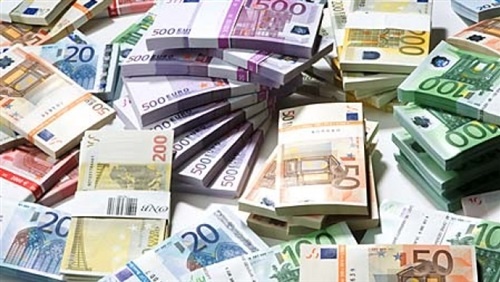Publisher: Maaal International Media Company
License: 465734
Demand for currency safe havens rise due to concern about banking sector
Currencies that are safe havens such as the dollar and the yen witnessed a turnout today, Thursday, amid fears of a global banking crisis, after the impact of the collapse of the Silicon Valley bank in the United States spread across the Atlantic to Credit Suisse in Switzerland.
In the latest blow to investor confidence in the financial sector, Credit Suisse shares plunged on Wednesday by as much as 30 percent after the bank’s largest shareholder said it could not provide it with more support.
According to “Reuters”, the decline in the shares of the troubled lender prompted the Swiss National Bank (the central bank) to extend it a financial bailout, in an unprecedented step. Credit Suisse announced at the start of Asian trading on Thursday that it would borrow up to 50 billion Swiss francs ($54 billion) from the central bank.
اقرأ المزيد
Dealers turned to currencies that represent traditional safe havens, which led to support for the dollar and the yen, amid growing fears that the pressures that began to unfold between banks in the United States and Europe may be a precursor to a widespread crisis.
Japanese yen jumped about 0.5 percent in early Asian trading and recorded 132.73 in the latest trading against the dollar, after achieving gains on Wednesday of 0.6 percent.
Against the Swiss franc, the dollar lost some of the rise it recorded in the previous session and amounted to 2.15 percent, which is the largest daily gain since 2015, but it kept the Swiss franc close to its lowest level in a week.
“We have some new turmoil in the European banking sector and things are still very volatile at the moment,” said Carol Kong, currency analyst at the Commonwealth Bank of Australia.
“Given the extreme uncertainty and concerns about a broader financial contagion, the dollar and yen will be the main beneficiaries due to the demand for safe havens,” she added.
Euro compensated for some of its losses in early Asian trading, as it rose in the latest transactions by 0.04 percent to $ 1.0582, after falling 1.4 percent in the previous session.
British pound sterling also increased 0.18 percent to $ 1.20775, after falling about 0.9 percent on Wednesday.
US dollar index, which measures the performance of the US currency against a group of currencies, fell 0.07 percent to 104.58, after jumping nearly 1 percent in the previous session.
Meanwhile, Credit Suisse, which is struggling to recover from a series of scandals that have undermined the confidence of investors and customers, is the latest victim of the crisis of confidence after the collapse of the US bank Silicon Valley last week.
The closure of Silicon Valley on Friday, followed by the collapse of Signature Bank two days later, prompted US President Joe Biden to confirm that the financial system was safe, and prompted emergency measures in the United States to make more funding available to banks.
However, investors remain deeply concerned as they await more clarity on the extent of the fallout
The focus is also shifting to how central banks will move to raise interest rates in the future, as policy makers are in a dilemma regarding the extent to which they can raise prices to curb inflation without causing a shake-up in the financial sector.
The European Central Bank meets on Thursday and is due to announce its interest rate decision after the meeting
The risk-sensitive Australian and New Zealand dollars struggled to make progress after falling nearly 1 percent each on Wednesday.
The Australian dollar rose in the latest transactions by 0.19 percent to $ 0.6634, while its New Zealand counterpart fell 0.26 percent to $ 0.6172, affected by weak economic data issued on Thursday, which showed the contraction of the New Zealand economy in the fourth quarter of 2022.









